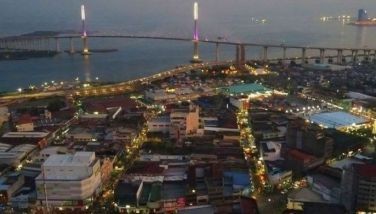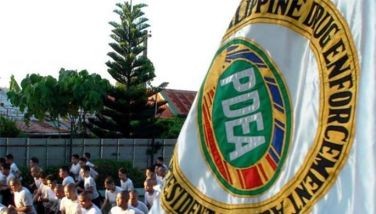450th anniversary of KAPLAG
CEBU, Philippines - A visit to the Augustinian monastery in Intramuros, Manila is one occasion to admire the botanical gardens constructed in one of its cloisters by an Augustinian friar named Manuel Blanco in the early 19th century. He was the author of the famous work entitled Flora de Filipinas.
Fr. Manuel Blanco was born in Navianos de Alba de Aliste in the Province of Zamora, Spain, on November 24, 1779. He joined the Augustinian Order at Valladolid where he made his profession on December 6, 1795. Immediately after his priestly ordination, he was sent to the Philippines. He arrived in Manila on April 19, 1805. After studying the Tagalog language, he was sent to work at the Parish of Santa Monica in Angat, Bulacan (previously evangelized by earlier Augustinian missionaries in the late 17th century). It was there where he started to study Philippine flora.
In 1812 Father Blanco was assigned as parish priest of San Jose, Batangas where he renovated the Church of Saint Joseph the Patriarch (whose original structure dates back to 1762). He also built a convent adjacent to it. From San Jose he was also assigned to Bauan, Batangas (1815), Batangas, Batangas (1829-1830), Parañaque (1838), and Guadalupe, Makati (1839-1845), where he died on April 1, 1845 at the age of 65.
Aside from pastoral works, Father Blanco also held significant offices in his Augustinian Province – that of the Most Holy Name of Jesus. He was once Provincial Counselor (1825-1829), Provincial Treasurer (1830-1833), and Rector Provincial (1833-1837). The last position provided him with occasions to visit the Provinces of Batangas, Bulacan, Pampanga, Ilocos, Pangasinan, Capiz, Antique, Iloilo and Cebu. Those visits gave him the chance to further his study of Philippine flora and to increase his collection of local plants and flowers.
In the Prologue to the first edition of the Flora de Filipinas (UST Press, 1837) the author informs us that he began his study of Filipino plants and flowers as a hobby “without teachers and herbarium, and almost without books except for (the Swedish botanist Carl) Linnaeus’ Systema Vegetabilium.” This was the only book and guide that he used in fostering his natural inclination for the study of plants. Later he acquired other botanical books (such as Antoine de Jussieu’s Genera Plantarum). However, he points out that he never “thought or intended his botanical studies for publication” for he believed that the study of Philippine plants should be carried out by professional botanists.
Father Blanco’s personal notes on the Philippine flora – quite contrary to his intention – made their way to the printing press when they caught the attention of Queen Isabel II who, on March 27, 1834, sent a royal order to the Governor of the Philippine Islands at that time and a letter to the Augustinian Provincial, exhorting them to have Father Blanco’s notes published. In response, he wrote: “I will try to arrange and put in order my papers, adding some new discoveries and other important news, and I will give them to the press.”
The author of the Flora de Filipinas was under tremendous pressure as he tried to arrange his notes for publication. He confided to the Governor at that time that the “royal order, while honoring my person, had filled me with much anxiety, as I know my limitations and incompetence to give the public such a difficult work as the Flora of such a rich kingdom of plants as these islands. On my part the only thing left is to obey … I promise that at the beginning of January (1837) I will present my book for printing.”
Father Blanco’s book was well received by the general public and scientists alike, such that they demanded a second edition of it. The author, on the other hand, was already suffering from poor health. He retired at the Guadalupe monastery as he continued his silent work on the book. Unfortunately he never saw the publication of its second edition (D. Miguel Sanchez printing press, 1845) for he died before it was published.
The work Flora de Filipinas does not limit itself to classifying plants and flowers (taxonomy). The author went into explaining their use in construction, industry and the arts, and above all in medicine. It was a real encyclopedia of agriculture, industry, arts and sciences, as Fr. Ramon Martinez, OP, points out in his article “La Flora de Filipinas y el P. Blanco” (published in El Oriente, Year 2, No. 13, Manila 1874, p. 4).
The greatness of Father Blanco goes well beyond his interest in botany. In fact, as we have pointed out earlier, he does not limit himself to classifying Filipino flora in his work; he also explains their medicinal properties after having experimented with some of them on himself. In this regard, Fr. Policarpo Hernandez, OSA, notes that “his main obsession was to be of help to his parishioners” (The Augustinians in the Philippines, Colegio San Agustin, Makati 1998, p. 162, note 20). Aside from wanting to give his parishioners what we call today as “alternative medicine,” Father Blanco also taught them how to improve agriculture and the textile industry. Thus he composed a work entitled “Arte de hacer Indianas” on the use of looms, how to dye cotton and cloths, how to manufacture fabrics, and so forth.
Father Blanco also organized public schools in the Province of Batangas, where he promoted the study of the Spanish language among the students. Aside from education, agriculture, textile industry, and botany, we also owe a lot to Father Blanco as far as cartography is concerned since he composed a series of maps of various provinces in the Philippines both in Luzon and in Visayas. These were published in 1845.
In recognition of and in gratitude to Father Blanco’s dedicated life, labors and works for the Filipino people, a stone monument was set up in the town square of Bulacan in 1855 in the beloved memory of the Augustinian friar.
For further inquiries regarding the 450kaplag you may visit us in our 450Kaplag Office at the Basilica Minore del Sto. Niño Convent (near the Adoration Chapel). Our contact number is 255-66-99 loc. 200. You may browse our website at www.450kaplag.com or follow us also in our Facebook page (FREEMAN)
- Latest
























